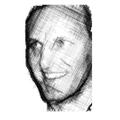Cited By
View all- Wu RChao FZhou CChang XYang LShang CZhang ZShen Q(2024)Internal Model Control Structure Inspired Robotic Calligraphy SystemIEEE Transactions on Industrial Informatics10.1109/TII.2023.329541520:2(2600-2610)Online publication date: Feb-2024
- Luo YWu ZLian Z(2024)CalliRewrite: Recovering Handwriting Behaviors from Calligraphy Images without Supervision2024 IEEE International Conference on Robotics and Automation (ICRA)10.1109/ICRA57147.2024.10610332(8671-8678)Online publication date: 13-May-2024
- Kruppa KKunkli RHoffmann M(2024)A skinning technique for modeling artistic disk B-spline shapesComputers and Graphics10.1016/j.cag.2023.06.030115:C(96-106)Online publication date: 1-Feb-2024
- Show More Cited By



